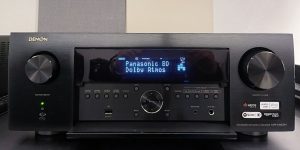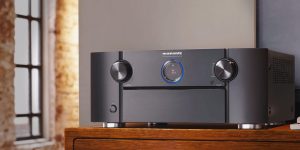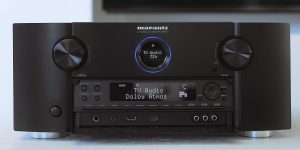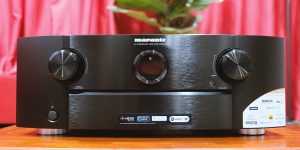So, you are thinking about setting up a quality sound system at your place and have already faced one of the biggest pitfalls on your way. Well, you are not the only one who found themselves facing the receiver vs. amplifier battle.
Today, I am going to clarify this moment and clearly explain the difference between an amplifier and a receiver. To begin with, I will cover the basic aspects to give you a clear idea of what you are choosing between. Also, I will share my experience and tell you what tasks the receiver will be suitable for and where it is better to use an amplifier. So you won’t have to make decisions in the dark.
What is a receiver?

The receiver is the brains of your home electronics, and it integrates all the video and audio sources in your apartment into a single system. It is, in fact, a multi-channel power amplifier equipped with digital audio decoders, a radio receiver, and an audio and video signal switcher. Simply put, a receiver can receive an audio and video signal, for example, from a TV, process it, amplify and deliver it to speakers. Furthermore, in addition to their basic functions, modern receivers can be equipped with various additional functions: voice control, multi-room technology support, surround sound, etc.
Stereo receivers
A stereo receiver is a device that reproduces high-quality sound from two speakers. Most of these devices have built-in volume and source controls but do not support video input. As a result, they have limited features and are primarily designed for listening to music.
AV receivers
An AV receiver is a multi-channel amplifier that decodes and processes audio and video signals of different standards. Audio-Video receivers (AV) are in many ways different from their stereo counterparts. As it goes from their name, such receivers support both audio and video signals. In addition, AV receivers usually support multiple inputs. Therefore, you can use it to connect your TV, Blu-Ray player, Xbox, or any other compatible device and deliver sound to your speakers.
An AV receiver is an excellent solution for building a home theater as it can become the heart of the system due to its multi-functionality and convenience of use, allowing you to deliver sound from any compatible device to your speakers.
What is an amplifier?

So, we already know that stereo amplifiers and AV receivers belong to a single family but vary in their purpose and features. Yet, why is there such a type of device, and what makes them different from one another? Let me explain in detail before you decide whether to buy a home theater amp.
Difference between power amps, integrated, and preamps
Talking about preamps and power amps, it is worth mentioning that both take a signal from the sound source and make it louder. Also, amplifiers are responsible for sound quality and affect depth and richness.
Simply put, the power amplifier is a specially designed device that serves to increase the magnitude of any incoming sound signal. The key aspect is that the power amplifier can not use any sound source because it needs to be above a certain threshold level. That’s why power amplifiers cannot work without preamplifiers. In turn, a preamp not just boosts the source audio but also manages the sound sources.
Quite often, manufacturers of amplifiers mention their devices as integrated amps. Simply stated, an integrated amplifier is a single device to rule them all. It includes both the preamplifier and the power amplifier. Thus, you won’t need to search for a place for two black boxes and instead have only a single one.
What should I choose for my audio system: amplifier or receiver?
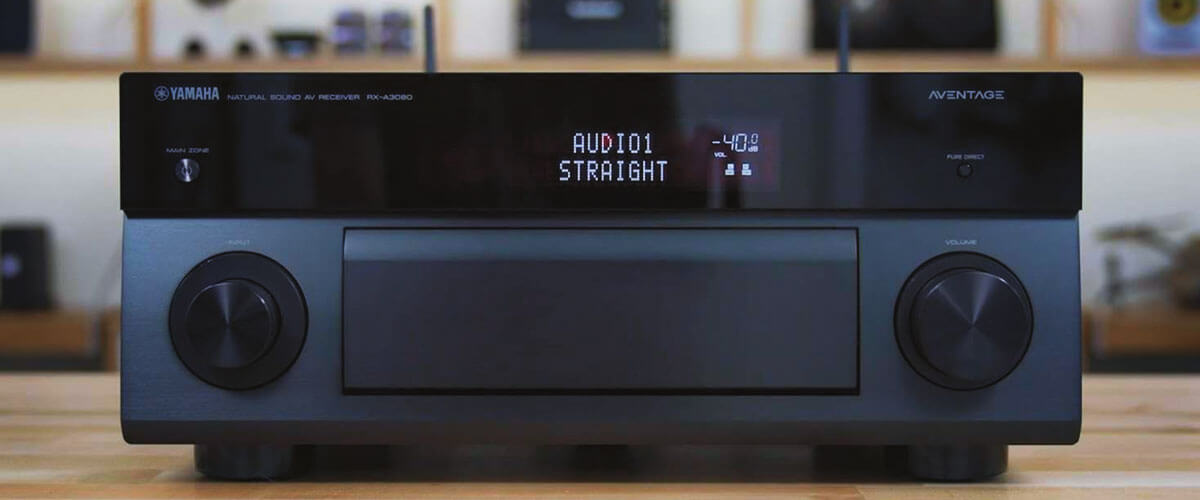
Every speaker requires an amplifier that’s taken for granted. Simple sound systems have built-in amplifiers in one of the speakers, and even your Bluetooth headphones have small amplifiers inside. But today, we are talking about systems that offer much more than just ordinary Bluetooth headphones.
I don’t recommend diving into the pre- and power amplifier thing if you don’t feel that’s your thing. Choosing two separate devices is not going to be cheap, plus it will add another layer of complexity, as now you need to choose between two devices instead of one. Furthermore, unless you have close to a serious budget, you won’t see any huge difference between a setup with two separate amplifiers and a single integrated one.
Well, the answer strongly depends on what you are expecting to get from your home entertainment systems. AV receivers come with many built-in features, yet the majority of those functions are only useful when watching movies or gaming. In turn, amplifiers still deliver quality sound when gaming or watching movies but lack the same level of immersion. However, they have a pretty significant advantage when listening to music.
Advantages and disadvantages of the amplifier
Advantages of amplifiers
- Upgrading the setup is easier
Needless to say, it is much easier to upgrade your home entertainment system when it consists of many separated objects. Do you feel that your old power amplifier has lost some watts over the last few years? No problem, you can get a new one without changing the whole system.
- Full control
I have already said that picking a separate preamplifier and power amplifier adds a layer of complexity, but it is not always a bad thing. When you pick up every component of your home entertainment system, you know exactly what you have. Consequently, you don’t waste time and money on features you don’t actually need.
Disadvantages of amplifiers
- You will need more space
Yep, there is no hiding from it. Two separate boxes take two times more space than a single one. Plus, you shouldn’t forget about cables that also will need some management.
- The price
The final price may surprise you, and in a bad way. For example, if you want to build your home entertainment system using separate components, it will cost much more than in the case of an all-in-one solution.
Advantages and disadvantages of the receiver
Advantages of receivers
- Save Space
A receiver requires way less space than separate amplifiers. Of course, you still face the need to manage cables, but it will be a way easier task than with two separate devices.
- Price
You can expect AV receivers to cost less than amplifiers. Indeed, there can be exceptions, but the general price of receivers is lower.
- All-in-one-Solution.
An AV receiver offers you almost everything one needs for the home entertainment setup. It supports audio and video inputs from multiple devices with extended controls and functions. In addition, receivers come with built-in amplifiers and may even have tuners.
Disadvantages of receivers
- No partial replacement.
Sooner or later, you will face the need to upgrade your setup. With a receiver, you won’t be able to upgrade parts one by one. Since the receiver is an all-in-one device, you will have to buy a whole new one when upgrading, which is far from cost-efficient.
- Amplifier quality.
True, the quality of amplifiers in receivers is rising, but it is still no match to dedicated amplifiers. In addition, quality amplifiers require space for pretty big components. Considering built-in amplifiers share the room with other components in receivers, don’t expect to get a powerful sound amplification.

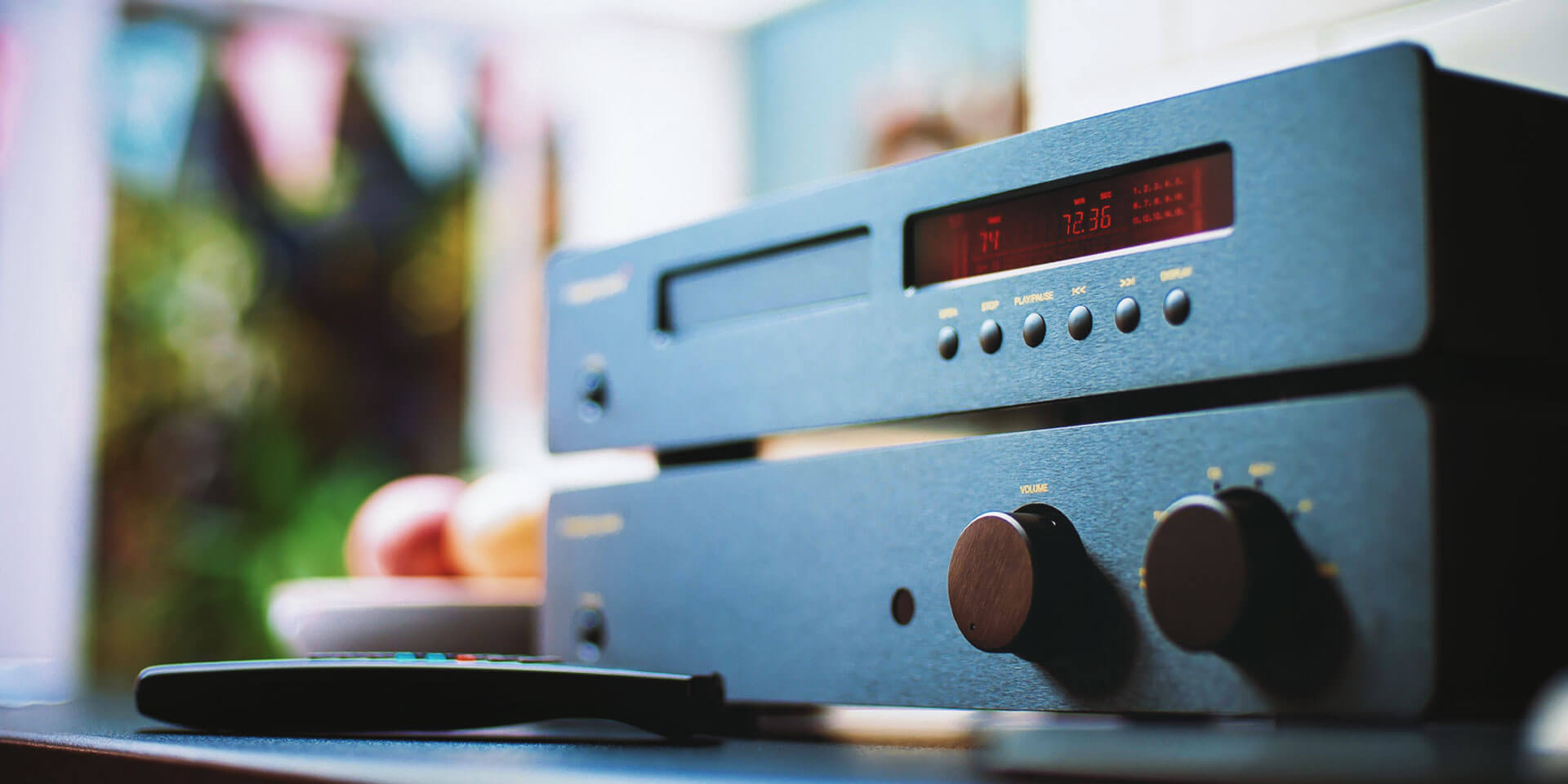


![Best 2-Channel Receiver [Expert Reviews and Buying Guide]](https://hometheaterology.com/wp-content/uploads/2023/11/best-2-channel-receiver-stereo-300x150.jpg)

